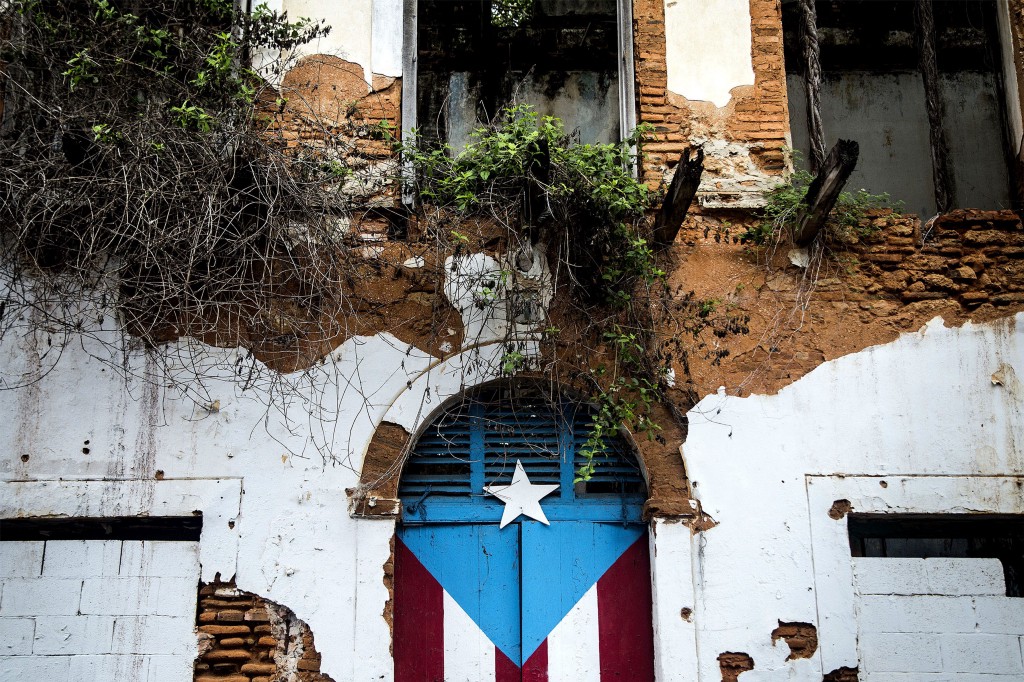You don’t have to choose sides between President Trump and Carmen Yulín Cruz Soto, the mayor of San Juan, Puerto Rico, to agree that a massive recovery effort looms for the U.S. territory — and for Anguilla, Barbuda, the Virgin Islands, St. Martin and Turks and Caicos.
Don’t forget the Florida Keys, Houston and Port Arthur.
And you don’t have to ascribe any particular weather event to climate change (as we’re too-constantly reminded not to do) to recognize the frequency, intensity and cost of natural disasters is going up. Whatever the cause, the effects are here.
Even among climate-change activists, climate adaptation has taken a back seat to “mitigation,” or efforts to reduce carbon emissions and thus slow climate change itself. But even before Hurricane Maria, this season’s storms made clear the urgency of finding financing solutions for climate resilience.
https://medium.com/media/8c3aacc51fd93d95948bd6c177f57b9d/href
In Puerto Rico, America could have its very own object lesson in how to build a climate-resilient 21st century infrastructure. While we’re at it, let’s help grow Puerto Rico out of the crushing debt burden that caused it to declare a form of bankruptcy in May of this year.
Basic needs
The island’s electric grid was creaking and broken even before Maria; now it is “totally shot,” as President Trump described it. The utility, PREPA, was $9 billion in debt before it declared bankruptcy in July. Power plants still run on expensive diesel fuel rather than cheaper and cleaner natural gas.
Sensing an opportunity to help Puerto Rico leapfrog to cheaper, distributed, renewable power, Tesla recently sent hundreds of its PowerWall battery systems that can be paired with solar panels to provide reliable electricity. Residential solar installer Sunnova, which has 10,000 customers in Puerto Rico, is working to restore off-grid power. The island could be eligible for federal funds designed to help utilities make their grids more resilient.
Elsewhere, solar minigrids have been gaining support from big corporate players, including Mitsui, Engie,Caterpillar and Total.
Mitsui backs OMC Power’s minigrid expansion to Africa
More than half of Puerto Ricans now lack access to drinking water. In recent decades, Puerto Rico has experimented — unsuccessfully––with privatization of its water supply, with contracts with water giants, Vivendi and Suez. Any new water infrastructure should encourage “green” infrastructure for water needs — including source water protection, floodplain restoration, water use efficiency, stormwater retention and infiltration. “Naturally Stronger,” a report earlier this year, details the community benefits of such approaches.
ImpactAlpha’s ImpactSpace database includes 130 companies tagged for “access to clean water and sanitation,” along with 37 investors and 11 services.
Insurance companies may be willing to pay for storm-resistant roofs. One model is MyStrongHome, which combines climate-resilient construction with financing and insurance products for coastal residents of Louisiana, South Carolina and Alabama.
MyStrongHome launches with $8 million from Calvert Foundation for coastal climate adaptation
Risk reduction
Perversely, the rising cost of climate-related damage holds the key to financing resilience. As risks rise, so does the value of measures to reduce them. Mitigating risks presents all sorts of opportunities for financing solutions. Led by insurance companies and backed by credit-rating agencies, loan underwriters, market analysts and traders themselves understand risk-reduction and risk-transfer.
The trick is to wrap sometimes-complex underlying projects in the kind of standardized, easy-to-execute and low-cost solutions that the capital markets want. Such vehicles must also have the ability to absorb billions of dollars, to make it worth the while of institutional investors like pension funds and insurance companies to do the work to add new products to their portfolios.
The Global Adaptation & Resilience Investment Working Group is working on ways to measure climate-change risks and collecting examples of investments in climate adaptation. The Rockefeller Foundation’s “Zero Gap” portfolio includes innovations like African Risk Capacity’s Extreme Climate Facility, an insurance product lets participating African nations tap a pool of capital after extreme weather events. States pay premiums into the insurance pool, managed by the African Risk Capacity, and receive quick payouts based on an objective index that tracks frequency and intensity of weather events. Countries then use the payouts to fund adaptation and resilience projects.
Here come the SDG-finance unicorns
Separately, Rockefeller backed the Nature Conservancy to design an insurance mechanism to protect the Mesoamerican Reef off Mexico’s Mayan Riviera around Cancun. The $215 billion Swiss reinsurer, Swiss Re, quantified the climate risks for hotels that get storm protection from the reef. For every meter of height the reef loses, potential economic damage from hurricanes triples. Under the policy, the reinsurer will make quick payouts after storms for repairs to the reef and beaches. The healthier the hotel owners keep the reef, the lower their insurance costs. “Instead of taxpayers and citizens absorbing the cost of all kinds of natural disasters, including climate events,” Swiss Re’s Alex Kaplan told Bloomberg, figure out a way to quantify the risk “and then push it out into the private market.”
A reef off of Mexico is getting its own insurance policy
More than capital
Impact investors shouldn’t shy from advocating for a political response to climate change, Imogen Rose-Smith, a longtime writer for Institutional Investor magazine and now an investment fellow with the University of California’s investment office, said on ImpactAlpha’s recent podcast.
The field of impact investing can brings together non-governmental organizations, institutional and high (and ultra-high) net worth investors with policymakers to drive more systemic change, Rose-Smith said. “What we really need to do is to steer the entire capital market system and the entire political system into a more resilient approach.”
Hurricanes add urgency to efforts to make climate resilience investable (podcast)











